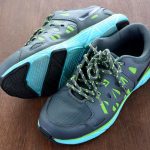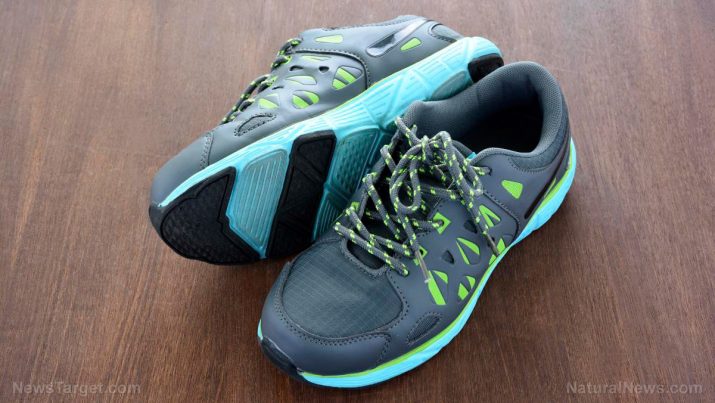
Don’t give in to the hype: Soft-cushioned running shoes increase leg stiffness, do not protect against impact
Sunday, May 26, 2019 by Edsel Cook
http://www.products.news/2019-05-26-soft-cushioned-running-shoes-increase-leg-stiffness.html

Soft-cushioned running shoes were advertised to be safer and more comfortable for athletes. But a recent study warned that such footwear might make legs stiffer, and the resulting increase in impact loading may make it much more likely for the foot to get injured.
The study evaluated a small group of physically active young men who regularly run or play sports. All participants received pairs of cushioned running shoes and thinner counterparts.
Researchers at the University of Helsinki performed 3D analysis of the participants while the latter ran at two different jogging speeds. After reviewing video footage of the volunteers, they found that the men wearing the soft-cushioned running shoes did not bend their knees as much as those who ran in the thinner shoes.
Their results showed that the feet clad in comfortable shoes impacted the ground harder. The faster the speed, the more noticeable the sharp increase in impact.
Study author and lead Helsinki researcher Juha-Pekka Kulmala explained that soft-cushioned and compliant shoes get squeezed beneath the foot when the foot hits the ground. During that moment, the leg experiences three times the typical body weight load placed upon it.
To maintain the bouncing movement that it prefers during running, the leg compensates for the higher impact by increasing its stiffness. But this compensation can’t wholly prevent sharp strikes from taking place. (Related: Fight anxiety and depression by running.)
Heavily cushioned running shoes fail to live up to their protective hype
Kulmala noted that the majority of people run in such a way that their heels struck the ground first and reasonably hard. The reason for this is that the other common pattern of running – where the forefoot hits the ground first – needs a lot more muscle power.
The forefoot-striking pattern forces the calf muscles to exert themselves at a higher rate. In contrast, the heel-striking pattern allows the muscles to pace themselves better.
Understandably, the heel needs a certain amount of cushioning if a person runs in the heel-striking pattern. However, the results of the Finnish experiment indicated that high amounts of cushioning could still cause substantial impacts. “Now there is this movement to have more padding with these ultra-maximalist shoes, but, again, some people like them, some don’t, and you have to find what works well,” Kulmala noted.
Bio-plausible proponents are all for making footwear as thin as possible. They argued that going barefoot is best for the body since nature designed human legs to operate that way. Shoes with minimal cushions came the closest to enabling barefooted running.
People should try on shoes first and test if the footwear protected their feet
Looking forward, Kulmala recommended conducting a running injury study that compares both soft-cushioned shoes and thinner shoes. In particular, the new experiment should also record the biomechanics of each participant before holding the running tests.
Earlier research on running injuries focused on the injury rates of many shoes – they did not consider impact force, leg stiffness, and other biomechanics information. These studies failed to find any considerable differences in the risk of injuries while wearing soft-cushioned shoes and thinner shoes. As such, Kulmala believed that the physiological differences in participants could be vital in figuring out the risks of running injuries related to footwear.
In the meantime, one way to avoid the risk of running is to try out a pair of running shoes before committing to the purchase and donning the new pair for the next couple of years. Nowadays, consumers buy shoes online for various reasons, so they have no chance of putting on the pair first and determine if it properly protects their feet during vigorous running sessions.
Sources include:
Tagged Under: Tags: badhealth, breakthrough, exercise, fitness, foot health, footwear, hype, legs, products, research, running, running shoes, slender, stiffness





